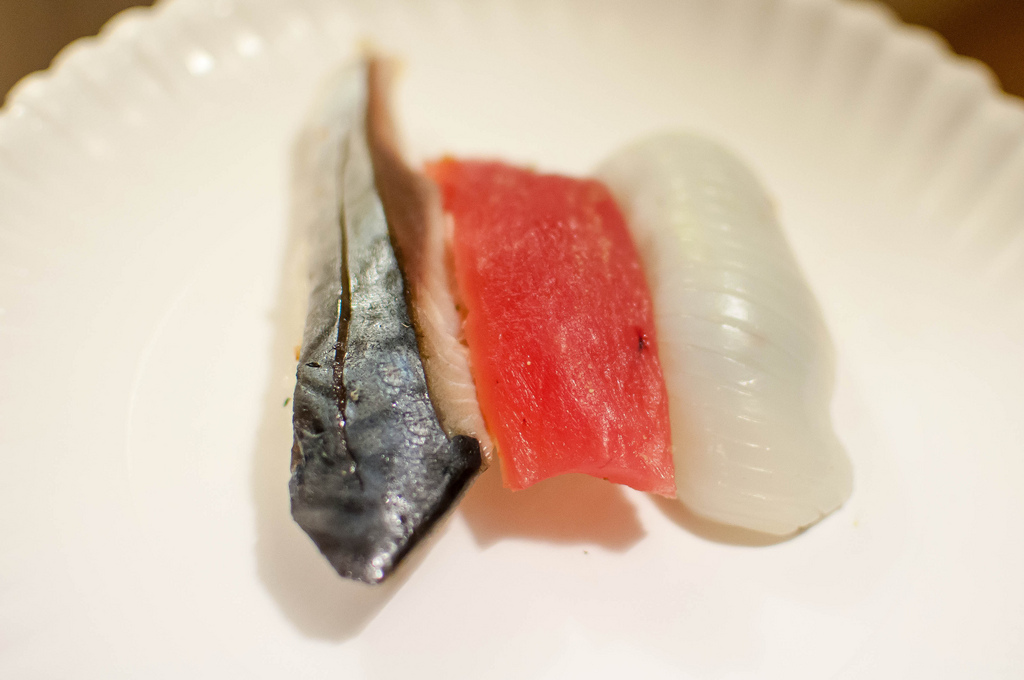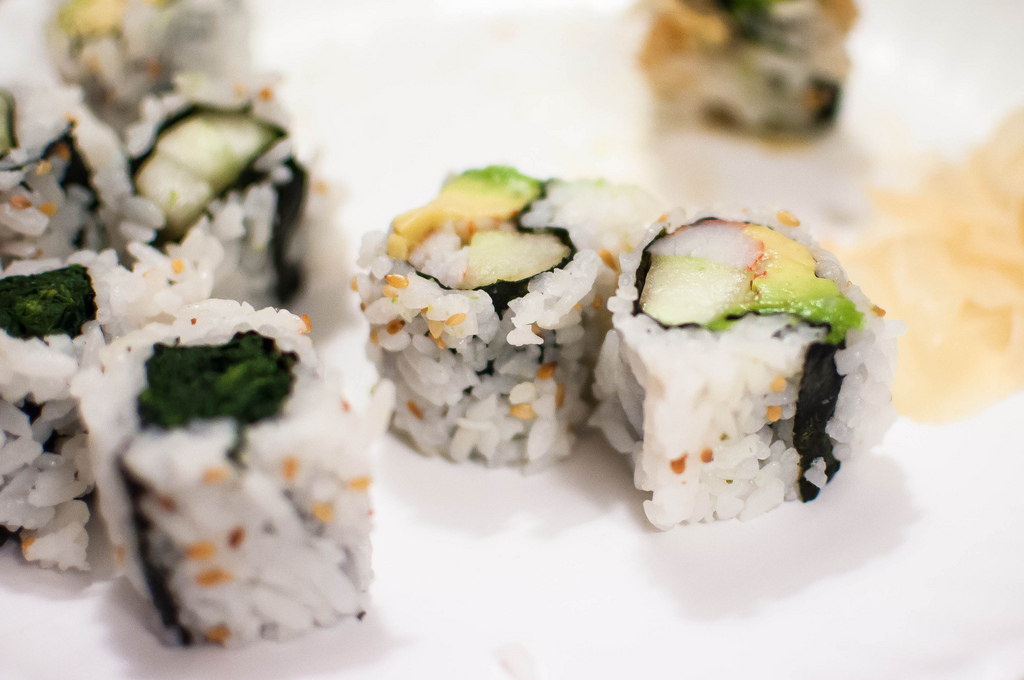In Japan, March 3 is Hinamatsuri, or “Girl’s Day.” Families with girls celebrate by decorating with beautiful dolls and eating sushi. Coincidentally, on March 3 this year, my RCA held a sushi study break for my hall—I decided to take this opportunity to talk about some sushi basics. Since my mother’s hometown is on the coast of the Sea of Japan, I was raised on delicious, fresh fish that our relatives would send to us, and sushi on campus is a topic that I have a lot to say about.
Taxonomy
1. The Rice
When you go to a sushi restaurant in Japan, there will be two main types of sushi—nigiri and rolls. Nigiri, which is literally the noun form of the Japanese word for grip, is so named because the sushi chef must grip rice to form it into the flat, oval shape of sushi. Rolls are made by rolling rice up with fish and vegetables inside, most of the time with seaweed on the outside.
Sashimi is not technically sushi, but just the raw fish that is used in sushi, eaten alone with soy sauce and wasabi.

Photo by Lisa Gong
2. The Fish
Now, on to the main part—the fish. It’s well known that sushi is mostly made with raw fish, but in Japan, fish can be categorized into akami (red meat), shiromi (white meat), and aozakana (blue fish). The names are quite self-explanatory.
- Akami: Fish that has red meat—most commonly maguro (tuna), sake (salmon), and buri (yellow tail)
- Shiromi: Fish that has white meat, such as tai (sea bream), hirame (flounder), suzuki (sea bass), tara (cod), and unagi (eel)
- Aozakana: Fish whose skin is slightly bluish, like saba (mackerel) or sanma (saury)
(Note: some fish are a little ambiguous as to which category they belong to, like yellowtail or salmon.)
Other than fish, a lot of shellfish as well as squid and octopus are frequently featured in sushi. Fish eggs are also a delicious part of sushi, like ikura (salmon eggs), tarako (cod eggs), and tobiko (flying fish eggs). Octopus, shrimp, and crab are typically served boiled, while most other shellfish and fish are all served raw.

Photo by Lisa Gong
Sushi in ‘Murrica
So, now that we have the basics down, I’d like to list a few things that are different in American sushi. This is not meant to be a criticism, though—I’ve gone to sushi bars with Japanese friends and enjoy the crazy rolls they make there; I just think of it as a completely different thing than the original sushi I’m used to.
1. Nigiri isn’t the main character…?
One of the most important distinctions between American sushi and Japanese sushi is that American sushi is much more focused on the rolls, which play more of a secondary role in a Japanese sushi bar.
In fact, the only rolls you’ll most commonly find in a Japanese sushi bar are: tuna rolls (Tekka-maki) and cucumber rolls (Kappa-maki). Every other roll you can imagine was probably conceived of and born in America!

Photo by Lisa Gong
2. Some other things about nigiri
Strangely, I was most surprised that nigiri in America all came by themselves—if you order one tuna nigiri in Japan, you would get two pieces of sushi. Another minor difference (that makes a difference, though!) is the absence of wasabi in nigiri. Normally, a little bit of wasabi can be found nestled in the nigiri between the rice and raw fish. When small children order sushi, they must order saying “Sabinuki!”, meaning no wasabi.
3. Foreign ingredients in sushi
The only vegetables you’ll see in sushi in Japan are cucumbers (which are smaller, thinner, and juicer than their American counterparts) and shiso, a Japanese herb comparable to a basil. Everything else—avocado, spinach, greens—are things that Americans put in rolls, perhaps to enhance the image that sushi is healthy? But avocado has recently become very popular in Japan, too, and people eat it like they would eat sashimi: cut into slices with soy sauce and wasabi. It tastes a little bit like a well-fattened piece of toro tuna, mellow and delicious!
Eel is also an ingredient that typically does not go into sushi in Japan. Eel is delicious and is a popular delicacy, but it’s most popular to eat it as a donburi, or in a big bowl with lots of hot white rice under it. Now that’s another story—but a really good one too. Japan has a lot of eel-specialty restaurants, so if you’re ever in Japan, make sure you go to one. It will certainly deplete your wallet a little, but is very much worth it!


